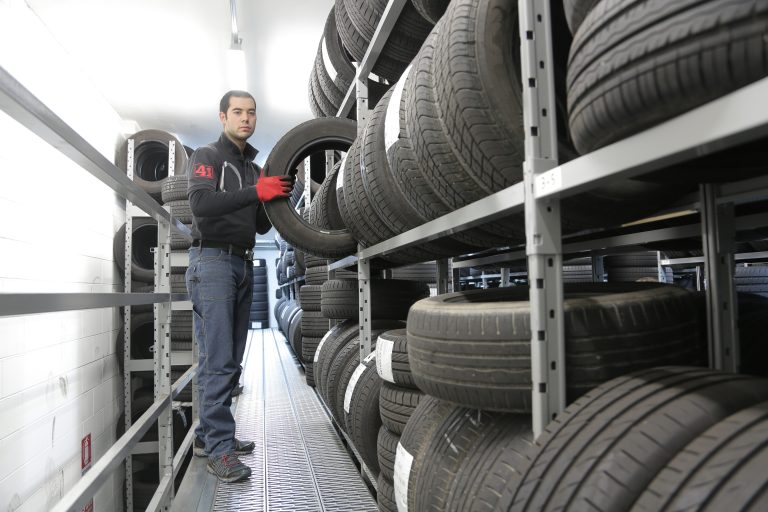Planning a long-distance move soon? You’ll likely need to adapt your vehicle to the new climate. In this guide, we’ll explore key preparations for a smooth transition. Your specific needs will vary based on your destination’s weather, whether it’s icy winters or sunny skies. Follow these tips for a well-prepared move.
Table of Contents
Key Takeaways
- Preparing your vehicle for a new climate is essential for a smooth transition during a long-distance move.
- Key preparations for colder climates include checking fluids, winter tires, battery health, and a winter survival kit.
- In warmer climates, focus on the coolant system, air conditioning, tire maintenance, and sun protection.
- Researching the new climate and understanding its impact on your vehicle is crucial.
Preparing Your Vehicle for a New Colder Weather Climate
As the seasons change and you find yourself planning a move to a new location with a colder climate, it’s essential to ensure that your vehicle is well-prepared for the challenges that lie ahead.
From icy roads to freezing temperatures, adapting your vehicle to the new environment can make all the difference in your safety and comfort. In this blog post, we’ll explore a comprehensive guide to help you get your vehicle ready for a colder weather climate.
- Check Your Vehicle’s Fluids:
Before embarking on your journey to a colder climate, it’s crucial to check and top off all essential fluids in your vehicle. This includes the engine oil, transmission fluid, coolant, and brake fluid. Cold weather can be hard on your vehicle’s systems, so ensuring they are well-lubricated and at the right levels is essential. - Winter Tires:
One of the most crucial preparations for colder weather is investing in a set of winter tires. Winter tires offer better traction and handling on icy and snow-covered roads, significantly enhancing your safety. Make sure to check the tread depth and condition of your tires regularly throughout the winter months. - Battery Health:
Cold weather can be particularly tough on your vehicle’s battery. Have a professional check its health and charge before you head out. Carry jumper cables and a portable battery charger with you, just in case. - Heating System Inspection:
Your vehicle’s heating system becomes your best friend in colder climates. Ensure that it’s working correctly, as a malfunctioning heater can make your winter drives extremely uncomfortable. - Antifreeze Protection:
Check the antifreeze in your radiator to ensure it can handle the colder temperatures. A 50/50 mix of antifreeze and water is usually recommended to prevent freezing. - Winter Survival Kit:
It’s a good idea to prepare a winter survival kit to keep in your vehicle. Include items like an ice scraper, snow shovel, blankets, extra clothing, non-perishable food, water, a flashlight, and a first aid kit. - Wiper Blades and Washer Fluid:
Visibility is critical in winter conditions. Replace worn-out wiper blades and use a washer fluid rated for freezing temperatures to ensure a clear view. - Emergency Roadside Assistance:
Consider signing up for an emergency roadside assistance service. This can be a lifesaver in case of a breakdown in harsh winter conditions.

Preparing Your Vehicle for a Warmer Weather Climate
When you’re planning a move to a region with a warmer climate, it’s essential to ensure that your vehicle is ready to handle the change in weather conditions. You can follow the suggestions below to make your prep easier.
- Coolant System Check:
One of the first things to address is your vehicle’s coolant system. Warmer weather can put added stress on your engine, so ensure that your coolant system is in top shape. Check for leaks, and if needed, flush and replace the coolant to ensure it can handle the higher temperatures. - Air Conditioning Inspection:
A well-functioning air conditioning system is a must in hot climates. Make sure your AC system is inspected and serviced before your move. You wouldn’t want to face a scorching day without a cool, comfortable cabin. - Tire Maintenance:
Hot roads can be tough on your tires. Check their condition and ensure they are properly inflated. Consider switching to all-season or summer tires if you’ve been using winter tires. - Battery Health:
High temperatures can affect your vehicle’s battery life. Have it tested to ensure it can handle the heat. Clean any corrosion from the terminals and secure them properly. - Sun Protection:
The sun’s UV rays can take a toll on your vehicle’s exterior and interior. Invest in sunshades for your windshield and windows to protect your car’s interior from heat damage. - Fluid Levels:
Regularly check and maintain your vehicle’s fluid levels, including engine oil, transmission fluid, brake fluid, and power steering fluid. High temperatures can cause fluids to evaporate more quickly. - Tinted Windows:
Consider getting your windows tinted if your new climate is exceptionally sunny and hot. Tinted windows can help keep your vehicle’s interior cooler and protect against harmful UV rays. - Emergency Kit:
Prepare an emergency kit for your vehicle, including items like sunscreen, a hat, water bottles, and a first aid kit. Hot weather emergencies can be just as challenging as cold weather ones.
Let Us Handle Your Auto Transport Needs
Mercury Auto Transport is an auto transport broker that presents offers from FMCSA (Federal Motor Carrier and Safety Administration) licensed and insured carriers. We have access to a wide range of car transporters through National Dispatch Boards, and together with you, we can often strategize and negotiate far better rates.
Get a free quote today or speak with one of our professional auto transport representatives and experience seamless and reliable auto transport services.

How to Assess Your Destination Climate
Before you embark on the journey to a new climate, it’s crucial to gather as much information as possible about what you’re heading into. The climate of your destination will play a significant role in how well your vehicle performs and holds up over time. It’s break down the steps involved in assessing your destination climate.
Research the New Climate
- Temperature Ranges: Start by understanding the temperature ranges in your new location. Check the average highs and lows throughout the year. Is it scorching hot in the summer and bone-chilling in the winter? Knowing the temperature extremes will help you prepare your vehicle accordingly.
- Precipitation Patterns: Different climates experience varying levels of precipitation. Is your new home known for heavy rainfall, snowfall, or is it mostly dry? Knowing the precipitation patterns will guide your decisions on tires, wipers, and other vehicle essentials.
- Seasonal Variations: Consider the seasons in your new climate. Does it have distinct seasons like spring, summer, fall, and winter? Understanding these transitions will help you anticipate how your vehicle needs may change throughout the year.
- Extreme Weather Events: Some regions are prone to extreme weather events such as hurricanes, heatwaves, or blizzards. Research if your new area is susceptible to these occurrences and prepare accordingly.
Understanding Climate Impact on Vehicles
Now that you have a clearer picture of your destination’s climate, it’s time to understand how it can affect your vehicle.
- Temperature Effects: Extreme heat and cold affect performance; hot weather can cause overheating, while cold can hinder starting.
- Moisture and Corrosion: Humid climates increase rust risk, especially in coastal areas with salt in the air.
- Traction and Road Conditions: Differing climates mean varying road conditions, affecting handling and tire wear.
- Interior Wear: Sunlight can damage interiors; protect against fading, cracking, and upholstery damage.
- Fuel Efficiency: Extreme temperatures impact gas mileage; prepare for potential changes in fuel costs.
- Vehicle Longevity: Climate significantly influences a car’s lifespan; proactive measures can extend it.
In this journey of preparing your vehicle for a new climate, we’ve covered essential tips to ensure your vehicle performs at its best, no matter the weather. From gearing up for colder winters to getting ready for scorching summers, your vehicle’s well-being is paramount.
Remember, adapting to a new climate isn’t just about keeping your car in top shape; it’s about ensuring your safety and comfort on the road. By following these guidelines, you’re not only safeguarding your vehicle but also enhancing your overall driving experience. Safe travels!
Frequently Asked Questions about Preparing For Moving Your Car to a New Climate
Do I need to prepare my car for a new climate?
Yes, it’s essential to prepare your vehicle for a new climate. Different climates can have a significant impact on your car’s performance and longevity. Proper preparation ensures safety and comfort in your new environment.
Is it necessary to tint my windows when moving to a sunny climate?
Tinted windows can help protect your vehicle’s interior from UV rays and keep it cooler in hot climates. While it’s not mandatory, it can be beneficial for comfort and longevity.
What should I include in a winter survival kit for my vehicle?
A winter survival kit should include items like an ice scraper, snow shovel, blankets, extra clothing, non-perishable food, water, a flashlight, and a first aid kit.
Where can I get professional assistance for preparing my vehicle for a new climate?
Professional auto shops and service centers can help you assess, maintain, and prepare your vehicle for a new climate. Additionally, auto transport services can provide guidance for long-distance moves.

